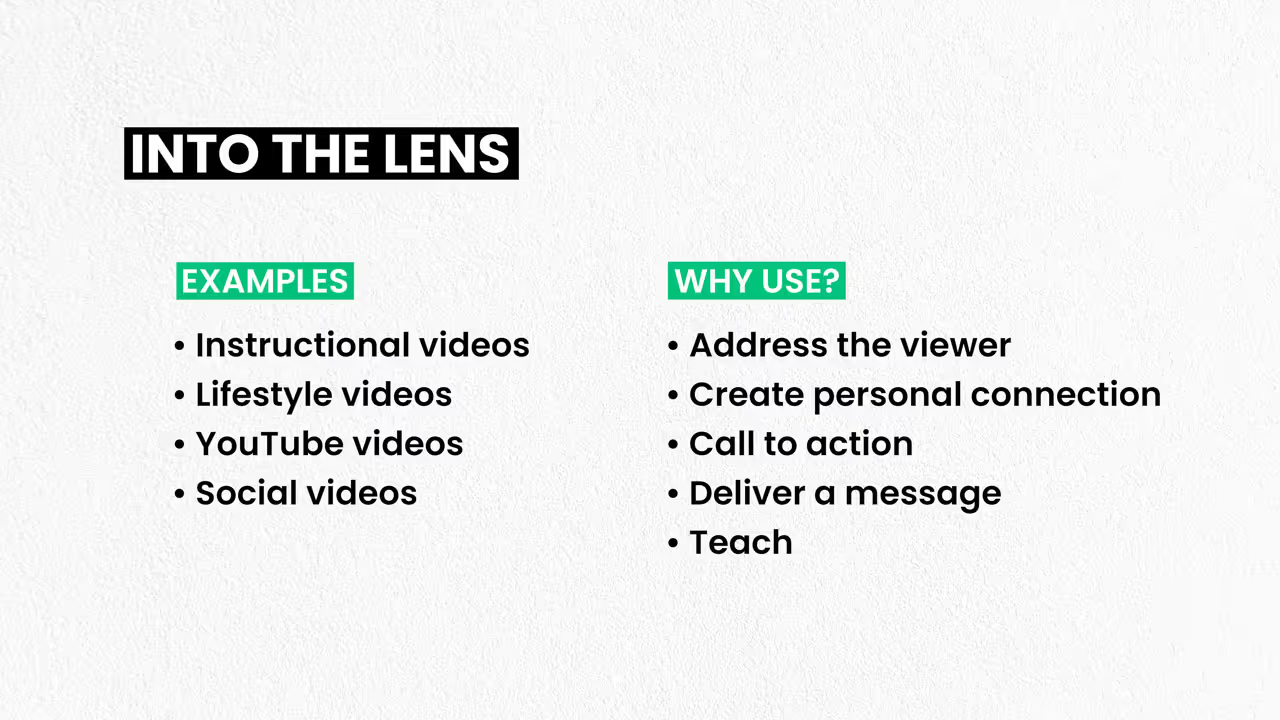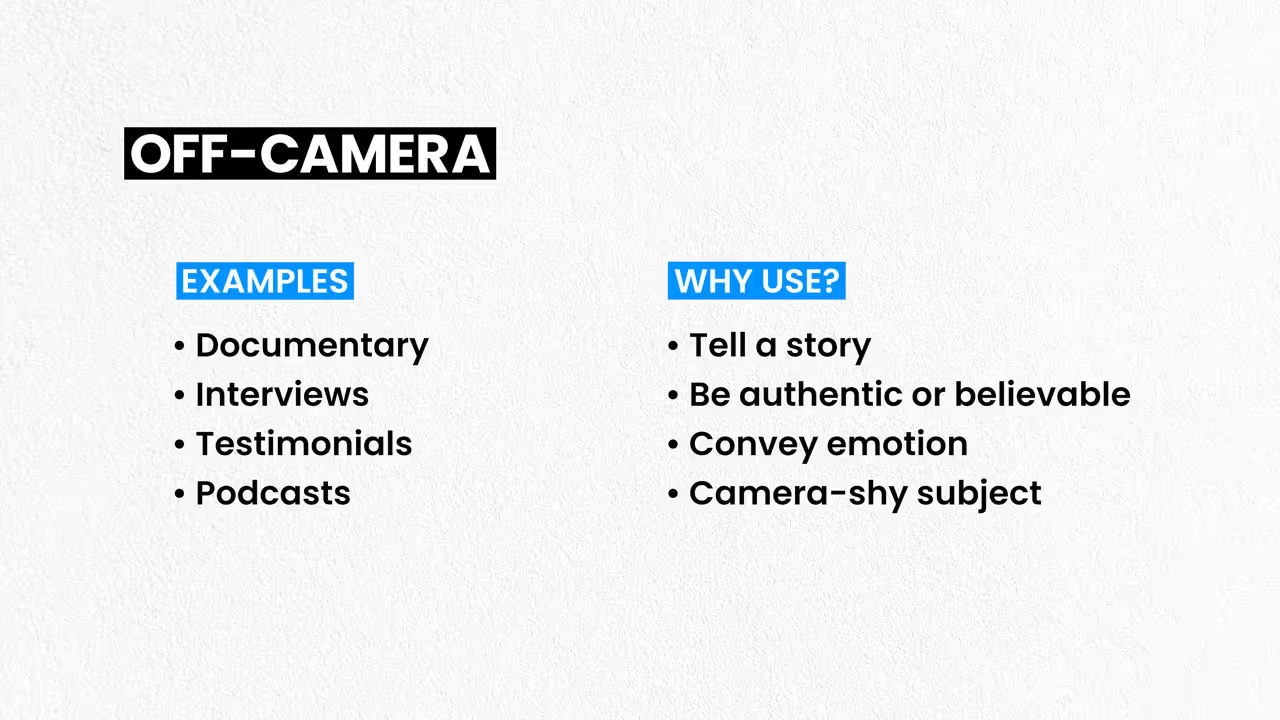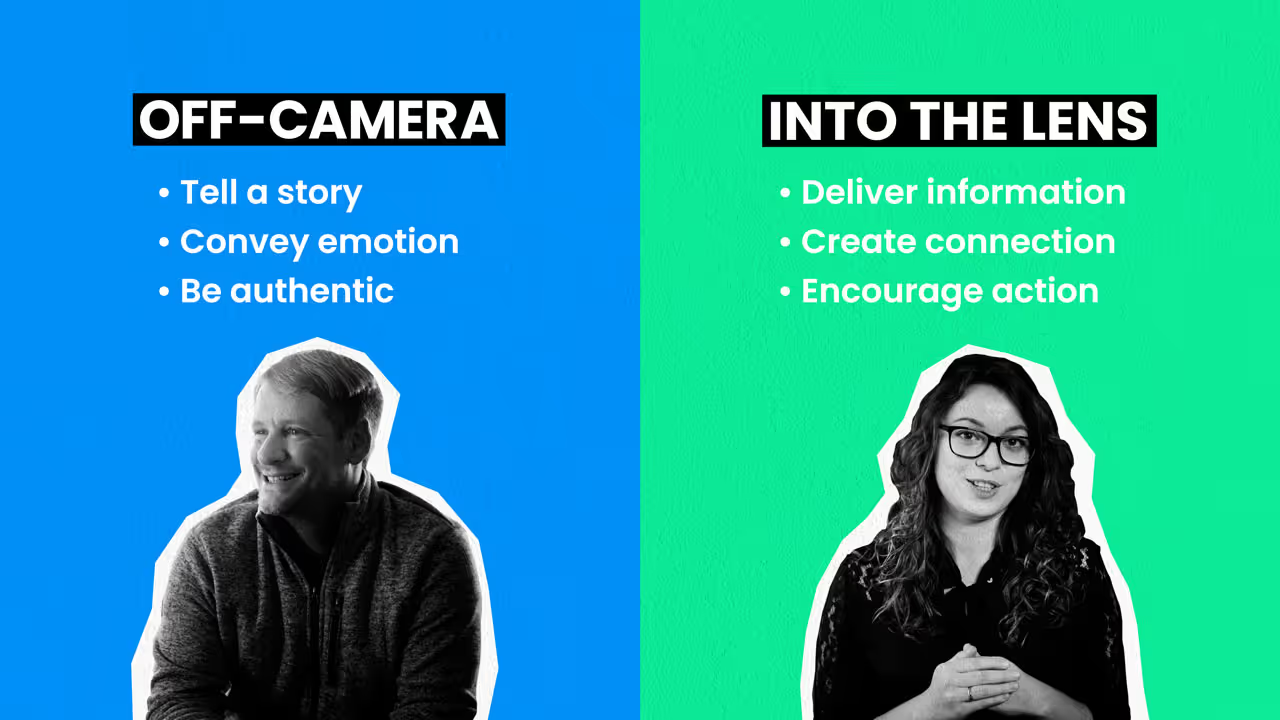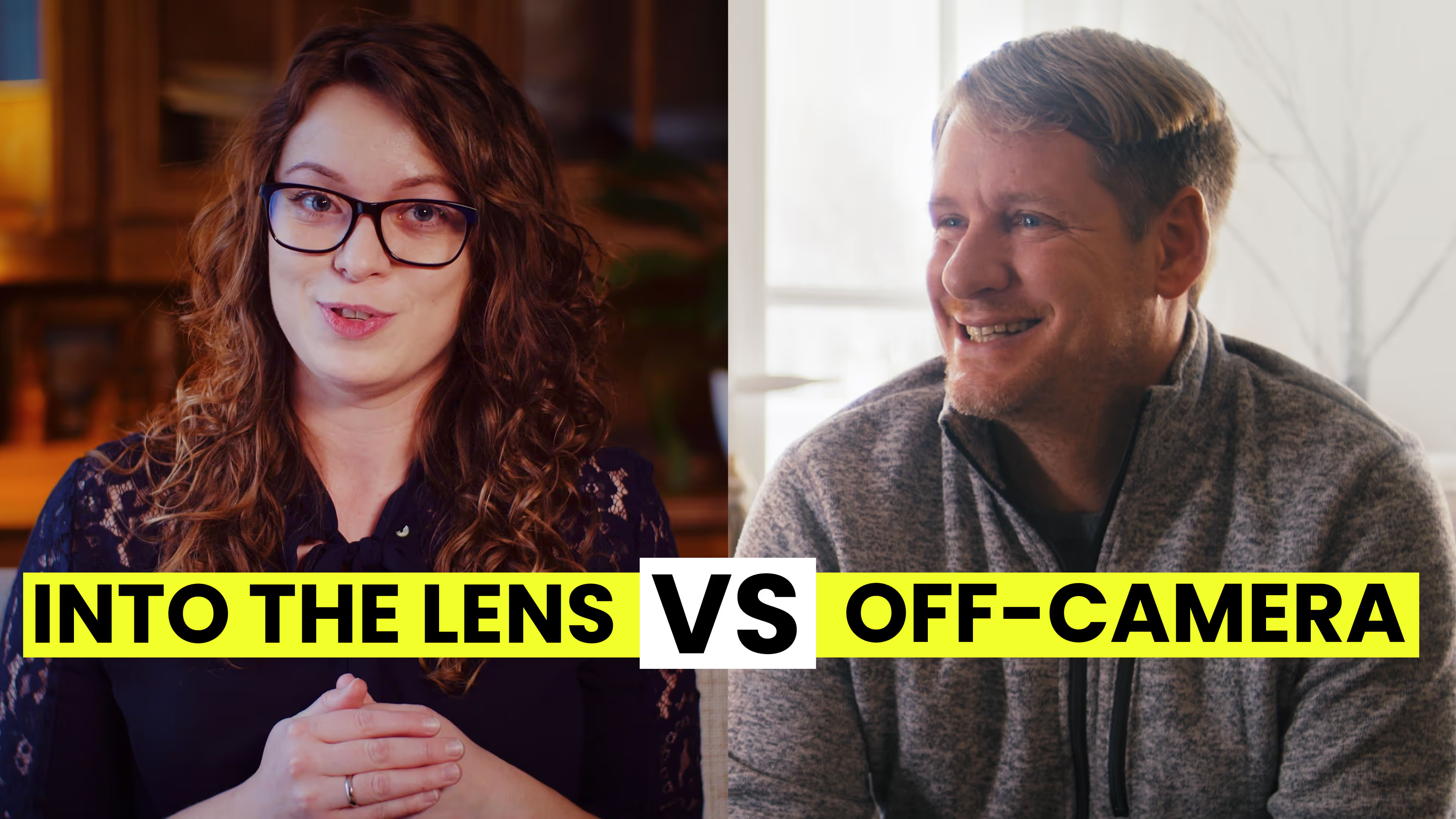Story or Connection: When Video Subjects Look Into the Lens or Off-Camera
One option results in a more natural, at-ease, approachable feel. The other is better for conveying information, building trust or establishing expertise quickly.
So what’s best for your corporate marketing video?
Ultimately, whether you should use the into-the-lens or off-camera technique depends on what you’re shooting for. Whatever you decide, it will significantly impact the resulting video’s feel and emotion, the link your company establishes with viewers, i.e., potential customers, and even how well they retain the information presented in the video.
Into-the-Lens vs. Off-Camera

Let's start with simple definitions.
Into The Lens: Having an subject look and speak directly to the video camera.
Off-camera: When subjects look off to the side rather than directly at the camera lens. Usually they look at the interviewer outside of the camera’s frame.
Into-the-Lens Filming Examples

Having a subject look right into the lens is great for instructional videos, lifestyle videos and videos that focus on a specific person, such as an influencer. The technique is highly effective for personal branding and businesses that want to establish personal connections through their marketing.
You’ve probably noticed that many YouTube creators use this style. That’s because the into-the-lens approach tends to create an instant connection with members of their audiences. Viewers feel as if they're being spoken to directly, as if the subject knows and cares about them personally.
This recipe video we create for Grilla Grills is an example of that effect in a marketing video, as well as the benefits it provides in terms of delivering information and teaching. By sharing videos like this consistently you can build a large audience over time.
Into-the-lens videos also are great for encouraging action, as the above social media advertisement for Holland Hospital demonstrates.
There are a couple of drawbacks to having a subject look directly into the lens, however. First, the resulting video can feel scripted and unnatural. Second, it can be difficult for some people because they feel nervous, uneasy or embarrassed. It’s kind of like “being put on the spot,” i.e., singled out in a group setting with a question or comment when you’re not expecting it.
Practice will address both of these issues. As someone gets more comfortable being on-screen the resulting videos feel less scripted, which leads to the stronger connections and speaker legitimacy that are the goals.
Off-Camera Filming Examples

Off-camera, on the other hand, is typically reserved for documentary-style videos and videos that are trying to tell a story.
While the term can easily be confused with whether an interview subject is within or outside of a video camera’s frame, i.e., on- or off-screen, it actually refers to someone who is on-screen but is looking away from the lens.
Off-camera videos turn viewers into silent observers or flies on the wall to conversations. The resulting unscripted nature makes the subjects seem more trustworthy and their story more believable while conveying stronger emotion.
Along those lines, imagine someone telling a highly emotional story. For the majority of people, it's much harder to look directly into the lens than to just have a conversation with someone and forget about the camera entirely.
“Kirt’s Story,” created for Holland Hospital in Holland, Mich., illustrates the excellent results you can get by making a subject who has little or no on-screen experience as comfortable as possible. The video demonstrates how powerful the off-camera technique can be for putting subjects at ease so they can tell their personal, emotional stories; for making them seem believable and genuine; and for establishing the expertise of the professionals within your organization.
The Geckobrands testimonial is another example of making customers seem more trustworthy as they say good things about Cavallo, their distribution inventory management software partner. The video also effectively tells the story of how the software simplifies multiple points and processes throughout their company.
Overall, it is much easier to get a good performance, or to get a subject to open up more, when they can speak to someone – in this case the interviewer – as opposed to looking directly at the camera.
For viewers, off-camera videos make us silent observers or flies on the wall to their conversations. The resulting unscripted nature makes the story they're telling much more believable and conveys much more emotion.
That’s a Wrap

In summary, to effectively convey information or build an instant connection with your audience, have your subjects look directly into the video camera’s lens. To convey emotion or come across as authentic, have your subject look off camera.
Which technique you choose to use – into-the-lens or off-camera – can be the difference between a video that clicks or one that falls flat and doesn’t generate the results you desire, whether it’s visits to your website, inquiries to your sales team or some other metric.
Thanks for reading this post and watching the videos that illustrate into-the-lens vs. off-camera filming. If you have any questions, please comment below or get in touch. Until then, we'll see you in the next video.




